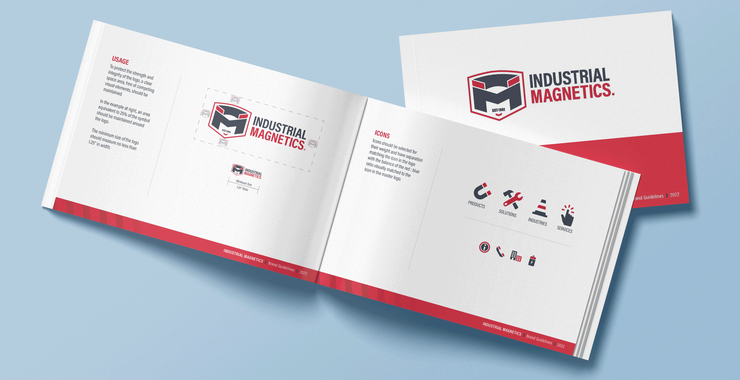How to reinvent your B2B digital ads
Are your digital ads getting stale? Find out when you should refresh an advertising campaign, how much you should change it, and how to make sure it lands with your target audience.

If digital advertising sounds like a challenge, think about other ads you’ve seen in the B2B space. Chances are you’ve seen a whole lot of images with low-resolution photos, too much text, and a lack of eye-catching design elements.
B2B advertisers, we love you. But you have to admit the space sometimes lacks creativity and pizzazz. For anyone who’s thinking about revamping a digital ad campaign, this is actually a great opportunity to stand out and do something different.
When should you consider refreshing an ad campaign?
If you’ve been running the same ads for a long time, there’s a good case for refreshing them to give your audience something new to look at. Repeating the same creative can get stale after a few months, and a fresh take can be an eye-catching way to boost visibility.
“When the ad is no longer resonating with the target audience, if it’s not achieving the results you want from a strategic position, or if your brand is looking to position itself differently in the market, it’s a good time to update it,” says Jeanette Thompson, Marketing and Brand Strategist at Motum B2B.
How often should you update ads?

You should be monitoring ad metrics on a consistent basis, but when it comes to making a significant change to the messaging or creative, the frequency depends on your advertising cadence.
“If the ad has been running longer term or has a lower audience turnover, you may want to refresh it more often,” says Thompson. “If it’s the same audience coming back over and over, the messaging will get stale faster.”
Another way to think about timing is whether your brand has gone through any noteworthy changes since your last ad launch. If you’ve made changes to your product, service, or strategy since then, does the old ad still reflect your brand? That’s a sure sign to develop new creative that will showcase your evolution to the target audience.
How big of a change are we talking?
How much you change the ad, or whether you create a new ad series altogether, depends on your reason for changing it.
Is it because you’re seeing a decline in engagement metrics or conversion rates? It may be time for an update, but if your ad has not been running that long, you may want to try tweaking individual elements before doing a total overhaul.
This is best done in a 30-day cycle with smaller A/B tests done on a weekly basis. You could test between two different colour schemes, two different headlines, two different CTAs, or two different sets of core imagery, but never test more than one of these sets at a time. Then you just need to set aside time to watch the results and see what resonates best with your audience.
If you have an entirely new campaign, product, or message to promote, that’s when you should develop a fresh set of campaign materials from scratch.
Sticking to brand guidelines
No matter your reason for refreshing the ad, some things will stay constant. You always want to make sure any changes you make fall under the scope of your brand guidelines.
“As you evolve an asset or create a new one, maintaining that brand integrity goes back to the brand’s essence and values — the visual identity or brand guidelines,” Thompson explains. That means staying consistent with any rules you’ve set about logo usage, typography, colour palettes, imagery, and the tone and voice of the ad copy.
Any insights you’ve gained about your audience should help guide the changes. For example, the data might show that your audience is getting tired of seeing static product imagery, but they do respond better to seeing products working within an integrated system that looks like theirs. Or maybe they don’t want product photos at all, and they resonate more with visuals that connect more closely to their industry or application. You can change up the imagery like this while still staying true to any stylistic choices outlined in your brand guidelines.
If any of this sounds confusing, don’t worry — this is what graphic designers are trained to look for. A brand strategist like Thompson is more like a steward for those guidelines, making sure all those different elements are harmonious, consistent, and true to your brand.
Updating ads: How to do it right
Locking down messaging
While it’s a visual-first medium, refreshing your digital ad doesn’t actually start with visuals. First, you need to build a strong foundation with a written messaging theme.
Once you know your campaign objectives and your target audience, you should encapsulate them in an outline of the ad’s messaging. This will serve as a source of truth for the copywriters and designers who will create the core elements of your ad.
“You can spend all day making cool designs, but if they don’t have meaning and relevance to your audience, you’ll waste a lot of resources jumping straight into design,” Thompson explains.
As you go through each step of the process, you can always refer to the messaging theme to ensure the ad says exactly what you want it to say.
Mood boards
A mood board captures the high-level visual direction of your ad. This is a collection of images, colours, and text that communicate the core design concepts that will be used. Picture it as a collage that will form the basis for more refined iterations of your ad.
“Trying to describe what you want to show is much easier through a mood board,” says Thompson. “It’s high level, so it can evolve, and it gives you a visual of what you really want to achieve.”
Ad copy
As the visual design develops, a copywriter will create the ad copy to convey the messaging theme in just a few short lines of text. It’s important not to overcrowd the ad with information, but it should complement the visuals, capture the essence of your message, and entice readers to act on your main call-to-action.
Design iteration
It’s important to get specific, constructive feedback from key stakeholders at each step of the process, because the earlier you catch any revisions you need to make, the easier it will be to make them. Visual choices can spark reactions based on personal taste, but it’s more important to focus criticism on whether the design meets your objectives by conveying the core messaging theme.
Final ad design

The final design of your ad should incorporate everything from the brand guidelines, messaging theme, mood boards, copy, and feedback to create the final set of campaign images. They are essentially one key image adapted into several formats, resulting in a cohesive “family” of assets that can fit into various mediums and screen sizes.
Publishing and monitoring
Now it’s time to sit back and see how your ad performs in the wild. This may take a bit of patience, but after a few months you should have enough data to analyze and review your results. A/B testing one element at a time (such as a line of CTA copy or the colour of a button) will help reveal the preferences of your audience, so you can keep refining as time goes on.
“Because advertising is constantly changing, you want to make sure you’re developing new creative to keep things fresh,” Thompson says.
